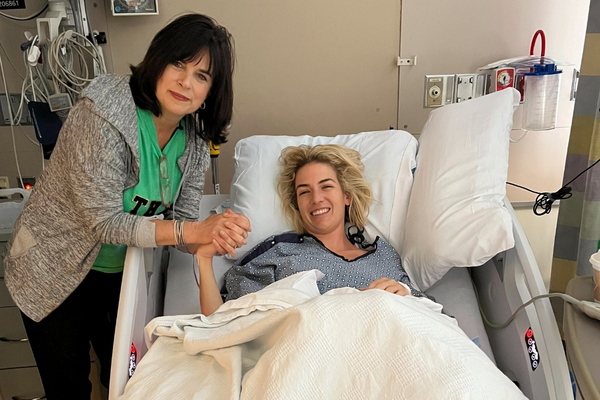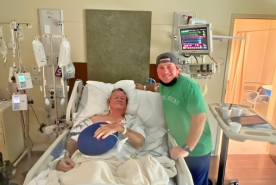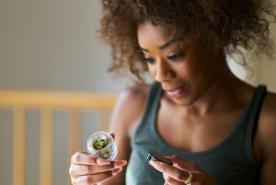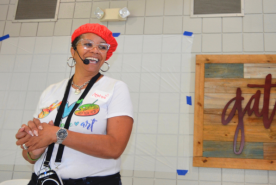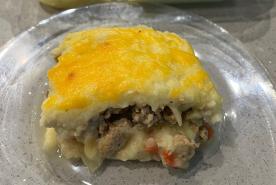October 17, 2023
Co-host for WWE's Raw Talk, SmackDown LowDown, and The Bump, Megan Connolly (also known as Megan Morant) has another title to add to her impressive resume–living kidney donor!
Read on to learn how the WWE host was inspired to donate a kidney and made a positive impact on not just one life, but four.
Hearing the call to donate a kidney
[VIDEO::http://www.youtube.com/watch?v=hdXYd3BDplY::aVideoStyle]
Megan first learned about living kidney donation when one of her coworkers went into kidney failure.
"I asked him about kidney donation and he told me the surgery is laparoscopic, which allows surgeons to access your abdomen without making a huge incision. That stopped me in my tracks. I couldn't believe you could save someone's life through laparoscopic surgery," said Megan. "That piqued my interest. I asked if a donor could have children afterward or run marathons. He thought so, but suggested I speak with a doctor to learn more."
After the work day ended, Megan went home and started researching.
"I went on kidney.org and read so many pages on the website. I learned what the kidneys do and how essential they are. I learned how many people are in kidney failure and how long the waitlist is for a deceased donor transplant. I also learned how few risks there are associated with donating. It clicked in my head–I'm healthy. I could do this," Megan said. "I made up my mind and got my blood tested a few days later. Unfortunately, I wasn't a match for my coworker but, thankfully, he matched with another person."
While Megan's husband exhaled in relief, she was incredibly disappointed.
"I'd already mentally prepared to donate a kidney and was sad when I wasn't a match. A couple of weeks later, I was in a group chat with old coworkers and the topic of kidney stones came up. I never talked about kidneys with any of my friends before, and now, within one month, I had multiple conversations about them," said Megan. "Sarcastically, I told the group to let me know if they ever needed a kidney."
Megan’s phone rang shortly after. Her old boss, David, asked if she was serious about donating. David’s wife, Margrette, was in kidney failure and looking for a donor.
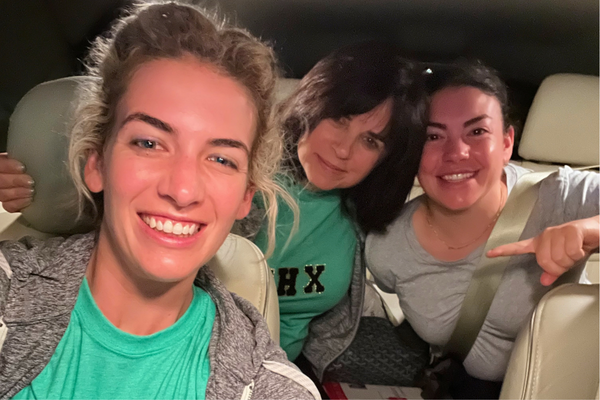
"I got goosebumps. What were the odds that two people I'm close to would need a kidney in such a short period of time? I told him I was serious," Megan said. "He and his wife didn't know much about the kidney donation process. She had just learned she was in end-stage renal failure and was dealing with the possibility of starting dialysis. I wasn't a blood type match for her but I knew that the paired kidney exchange, where non-matching donors swap their recipients, was an option. My donation to an anonymous recipient would trigger a chain of donations until a kidney was found for Margrette."
With that, Megan began the donor evaluation process in earnest, hoping she would be a good donor candidate. Her parents and husband, on the other hand, were hoping for the exact opposite.
"My dad said, 'It's your body. If this is what you want to do, we'll stand by you. But, are you sure?' I was and he accepted that. My mom really struggled with it but I think that’s a normal reaction for any parent," Megan said. "My husband was scared too but once he learned more about it, he was on board. The hospital did a great job educating both of us."
Learn more about living kidney donation.
Making the jump
Over the next few months, Megan and Margrette grew closer. They texted while Margrette was on dialysis, and Megan updated her about every appointment.
"I got the news that I was a candidate to donate after five months of testing. The transplant center spent the following three months looking for a recipient of my kidney. As the weeks dragged on, I often found myself wondering if I would ever become a living donor," Megan said. "Still, I felt privileged to give Margrette's family hope. People don't realize that when one family member gets really sick, it impacts everyone. David and Margrette have two kids in college. How can they enjoy their college experience while their mother is on dialysis? Going through the evaluation process allowed me to take pressure off of them because they knew there was a light at the end of the tunnel.”
Finally, Megan's surgery to donate her kidney to the anonymous recipient was scheduled for July 12th.
"I spent the night before the surgery at Margrette’s house with her and her family,” said Megan. “As a thank you, her older brother gave me a card and a necklace with the tree of life on it. The next morning, I woke up to two additional cards on the countertop, one from Margrette’s son Michael, and one from her daughter, Grace."
Megan was understandably nervous that morning, but those letters bolstered her spirits.
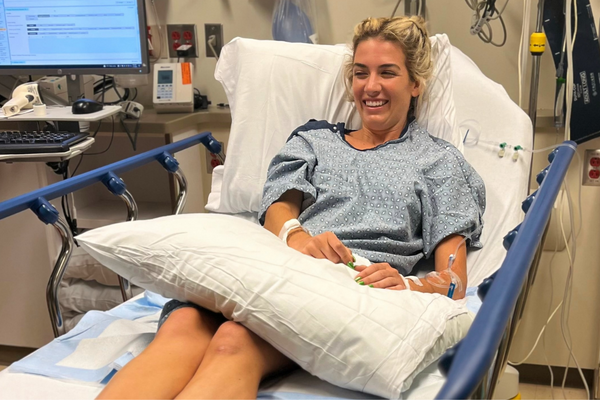
"I didn't have any thoughts about backing out but I was nervous going into surgery and what life would be like afterward. Reading their letters and knowing what I was doing for them, their mom, and (hopefully) future grandchildren meant the world to me," said Megan. "It wasn’t just about me or Margrette. This was going to impact generations."
Due to HIPAA rules, Megan couldn't know who received her kidney without their permission. So, she wrote a letter to her unknown recipient, handed it to her transplant coordinator, and waited with bated breath. It took a few weeks, but Megan's recipient did write back!
"I learned that I donated to a man named Joseph, a father to an eight-year-old daughter. He couldn't let himself think about his daughter growing up because he didn't know if he would be there for her big life moments. He said, 'Because of your donation, I am hopeful that I will be at my daughter's graduation and one day walk her down the aisle.' I am grateful that I gave him hope and he's feeling well," said Megan. "I'm considered a good Samaritan donor since I didn't have a pair that I entered the program with. I donated to someone with an incompatible donor. That donor then donated to another incompatible pair. By starting this chain, I helped four people get a kidney."
Despite Megan's joy knowing that she gave Joseph the gift of life, the journey won't be over until the donor chain ends and Margrette receives her transplant.
"Margrette should receive a call between one and six months. It's a waiting game but she let me know that July 12th, the day of my surgery, was the first time she had hope in a long time. While I was recovering, she asked how she could repay me but I don't need repayment. I'm happy. I felt called to do this and am honored that I could," Megan said. "She pressed me so I asked her to take a picture of every big moment in her life and send it to me. Margrette hugged me and said she wouldn't have to send anything because I'd be invited to those moments. I'm the sister she never had."
Megan’s family also came around and understood why she made a decision to donate after seeing the impact she’d made.
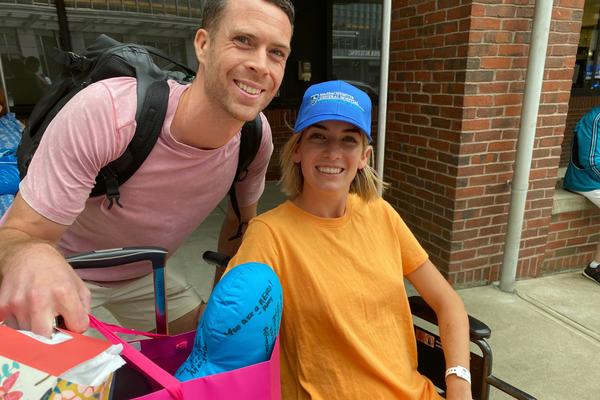
"When my husband saw Margrette's family's reactions and spent time on the transplant floor meeting other patients and donors, he understood. He looked at me and said, 'Don't let anybody ever tell you what to do. You did such a good thing and I'm so happy to have been there for it,'' Megan said. "Four days after the transplant, when I was home, I showed my parents the letters I received from Margrette's family and I don't think they'd ever been more proud of me. They were also relieved to see how quickly I recovered and was living my normal life."
Are you interested in becoming a living kidney donor? Take "Becoming a Living Donor," our free online course, to learn everything you need about living kidney donation.
Spreading the word
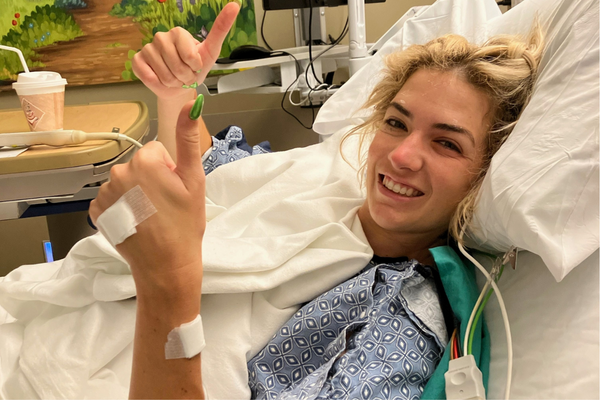
Now that Megan is on the other side of the donation, she's opened up about the transplant to the world.
"I reflected on whether I was going to put my story out there because I try to keep my social media focused on the work I do. I never in a million years thought that I would be a kidney donor because I knew nothing about kidney disease or kidney donation. I only learned when someone told me about it," Megan said. "I'm fortunate enough to have a platform and I want to use that for good. What better way can I do it than sharing my story? If even one person looks up kidney donation, I'll feel like I'm making a difference."
Megan also wants people to know that while kidney donation has some risks, they are mostly minimal, and she's recovered quickly and without complications.
"Sharing my story has been so rewarding. People are thanking me for sharing how quickly I've returned to normal life. Those who are scared to do this can look at me running three miles four weeks post-surgery and see that I’m okay," Megan said. "I breathed heavier and my calves burned during my first run after the transplant but as the national champion track sprinter, Sha'Carri Richardson said, 'You're not back. You are better.' I repeat that to myself as I get back in the swing of it."
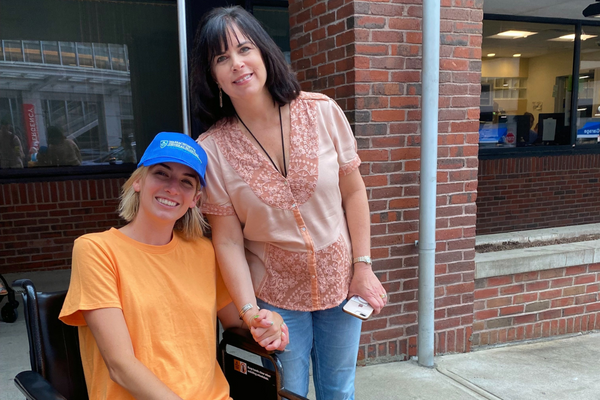
In such a short time, Megan's life has changed in the best way, and she's vowed never to stop talking about kidney disease, dialysis, and the life-saving gift of living kidney donation.
"I'm going to be talking about kidneys until the day that I die. There are nearly 100,000 people waiting to receive a deceased kidney and 13 people die every single day while waiting. That doesn't include the people whose lives are interrupted due to dialysis," Megan said. "If you are considering donating a kidney, go for it. Explore it first and ask questions but go for it. My day-to-day life isn't any different but, at the same time, it'll never be the same because of the impact I've made on people's lives. I've always felt so blessed and privileged to be in a position where other people wanted to help me, so I'm glad I can return the favor and help others. If I were to die tomorrow, I know I left the world a better place than I found it and that's really why we're all here."
Tell Congress to support protections for living kidney donors.
